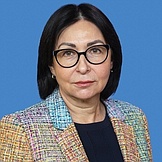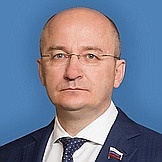Regional flags and emblems


PROFILE
Established 17 January 1934
Capital Chelyabinsk
Chelyabinsk Region is part of the Ural Federal District
Area 88,600 sq km
Population 3 383 200 (2025)
Ethnic groups
(2020 National Census, %)
Russian – 86,34
Bashkir – 4,38
Tatar – 4,11
Other – 5,17
Administrative Divisions (2024)
Municipal districts – 26
Municipalities – 1
City districts – 16
Rural towns – 24
Rural districts – 242
Inner — city districts- 7
Geography and climate
The Chelyabinsk Region is located on the eastern slope of the Southern Urals. Only a small part of its territory is in the west – the so-called mining area – which touches the Southern Urals’ western slopes.
There are two planetary boundaries in the region, which serve as a dividing line between two parts of the world – Europe and Asia, and the Urals and Siberia.
The region stretches for 400 km from west to east and for 490 km from north to south. It borders on the Republic of Bashkortostan, and the Sverdlovsk, Kurgan and Orenburg regions and has a state frontier with Kazakhstan. Its borders’ total length is 2,750 km.
The climate is continental with a cold and long winter and relatively hot summer with periodic droughts. The average temperature in January is –18,5°C, in July +20.2°C. The average amount of precipitation is 5 mm in January and 59 mm in July.
The region’s northwest is occupied by forests and mountains, while the rest is steppes and woodland grass. The highest point is Mount Bolshoi Nurgush (1,406.6 m).
The Chelyabinsk Region has many rivers and particularly lakes. Its main rivers are the Ural (upper reaches) and the Miass. It has 3,170 lakes, including 98 with an area of more than 5 sq km. The biggest lake – Uvildy – occupies 68 sq km. There are also 15 major water reservoirs in the region.
The region has natural reserves – the Ilmen Nature Reserve, Souhtern Ural and Western Ural Nature Reserves, Taganai, Zyuratkul and Zigalka national parks as well as the Arkaim Open-Air Historical and Architectural Museum.
Government
The legislative branch in the Chelyabinsk Region is represented by the region’s Legislative Assembly, which is the permanent, representative and only body of legislative authority in the region.
The region’s Legislative Assembly consists of 60 deputies who are elected for a term of five years. Thirty deputies of the regional Duma are elected in single- member constituencies and another 30 in single electoral districts in proportion to the number of votes cast for the lists of candidates appointed by electoral associations.
The current regional Duma was elected on September 2020. The term of office will expire in September 2025.
The executive branch in the region is represented by the Government, and other regional executive authorities. The Government of the Chelyabinsk Region is the supreme and permanent body of executive authority in the region
The Governor of the Chelyabinsk Region is the region’s highest-ranking official forms and heads the regional Government. The Governor is elected for five years by Russian citizens who permanently reside in the region. The incumbent Governor’s term ends in September 2029.
Economy and natural resources
The Chelyabinsk Region is one of the oldest mining territories and endowed with rich mineral resources. About 300 mineral deposits have been discovered. The region is Russia’s monopolist in the production and processing of graphite (95%), magnesite (95%), metallurgical dolomite (71%) and talc (70%). One gold porphyry, two copper porphyry, and nine pyrite deposits are of industrial value. Twelve copper and nine zinc deposits are included on the state’s balance. Geologists are prospecting for a relatively new mineral for the region – titanium magnetite ores. Industrial output accounts for over 40% of the regional GDP.
The metallurgical complex is in the lead in the region’s economy. It accounts for over 60% of industrial production. The region’s industrial development is determined by the machine-building, fuel-and energy, construction and agricultural sectors.
The following enterprises, the biggest in the region, are known far beyond its borders: the Magnitogorsk Iron and Steel Works, the Chelyabinsk Iron and Steel Works, the Magnezit Group, the Chelyabinsk Electrometallurgical Plant, the Chelyabinsk Zinc Works, the Ashinsky Metallurgical Works, the Zlatoust Metallurgical Plant, the Chelyabinsk Pipe Mill, the Chelyabinsk Tractor Plant and the Ural Automotive Plant.
Much attention is paid to the development of small-sized businesses. Every third person involved in the economy works in this area. The share of small-sized businesses in the regional GDP amounts to 25%.
Although industry obviously prevails in the Chelyabinsk Region, it also has advanced agriculture, especially in the chernozem areas. Wheat crops and other grains are particularly large. The dairy and meat industry and fine wool sheep breeding are also well developed. The region has many food processing companies – Makfa, Uvelka, Mirel, Ariant and First Taste.
The region produces every fourth tonne of rolled products and steel, every third kg of macaroni and about 12% of steel pipes.
Culture and tourism
The Chelyabinsk Region has a great cultural potential with professional theatres, museums, libraries and a zoo.
The Rodina (Homeland) Hall of Chamber and Organ Music is one of the best in Europe. The region has an effective and ramified network of educational institutions of culture and arts.
Works of Zlatoust armorers and Kasli iron sculptures have made the Southern Urals famous all over the world.
The Ilmen Festival of Bards under Open Skies, the Bazhov Folk Arts Festival and the Sinegorye Festival of Ethnic Cultures are cultural landmarks in the life of the region.
The region is developing ecological, alpine and cultural tourism (excursions), health and wellness resorts, and many types of active and adventure-related tourism.
The region has many historical and cultural landmarks, including 764 landmarks that have been granted this status officially, and about 3,000 landmarks have archaeological value. The latter include the Arkaim archaeological site of ancient settlements, the Bogdanovka Paleolithic settlement, the Kesene archaeological site, the cave complex of primordial settlements in the valley of the Ai River and numerous memorable places of historical events (the Pugachev places and sites of the battles of the Civil War), the Ignatyev Cave geological and geomorphological landmark, the Porogi landmark of nature, history and culture and one of the largest museums of minerals – the Ilmen Museum. Nine cities of the region have achieved the status of being a historical monument: Zlatoust, Kasli, Verkhneuralsk, Troitsk, Chelyabinsk, Kyshtym, Minyar, Magnitogorsk and Miass. Zlatoust, Verkhneuralsk, Troitsk and Chelyabinsk have architectural ensembles of the 19th century.
Uvilda and Kisegach – resorts of federal and regional significance – are located in forests and around lakes in the picturesque landscapes of the region’s alpine area. Kisegach has 40 health and wellness organisations, including the Yelovoye and Sosnovaya Gorka resorts and the Utes sanatorium, to name a few. In addition, the region has the Solnechny, Ural, Dalnyaya Dacha, Sungul and Zhemchuzhina Urala sanatoriums, the Magnitogorsk resort outpatient clinic and the Karagaisky Bor and Turgoyak health and wellness centres. Today, the region’s resorts are in the lead in Russia and meet all international standards.
The region’s beneficial geographical location creates unique opportunities for developing alpine tourism. In all, it has 15 alpine complexes. The largest ones are Adzhigardak, Zavyalikha, Solnechnaya Dolina and Abzakovo. They meet the highest European standards and are very popular with Russian and foreign tourists.
The Southern Urals offer many other types of active tourism and leisure – in addition to alpine tourism – caving, water tourism, diving and sailing.


